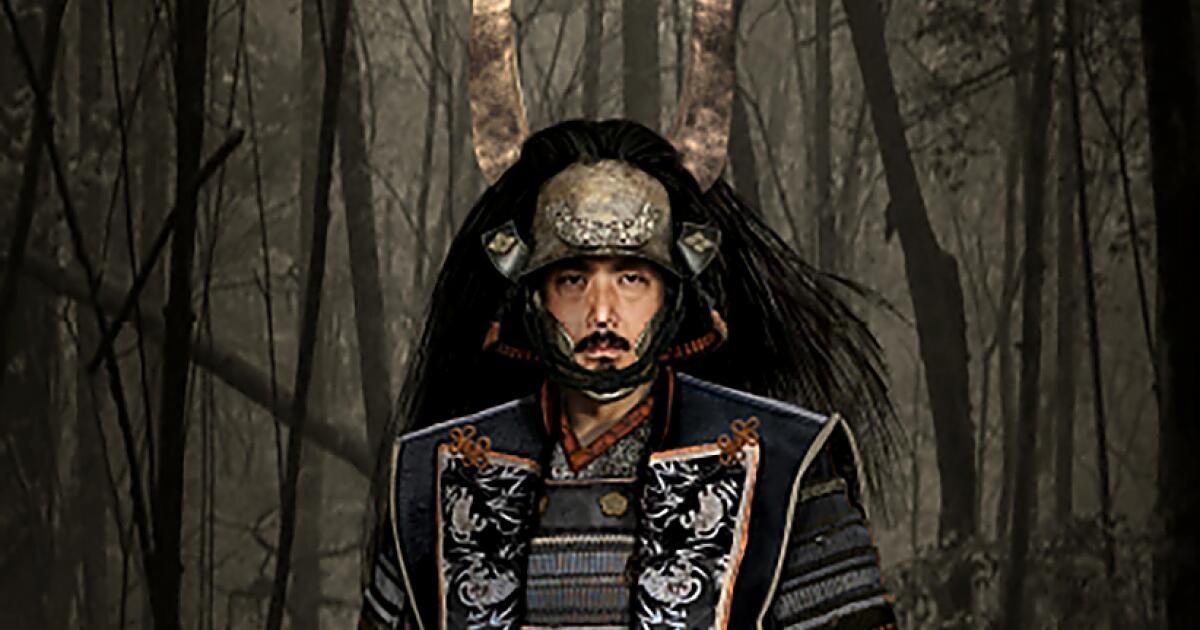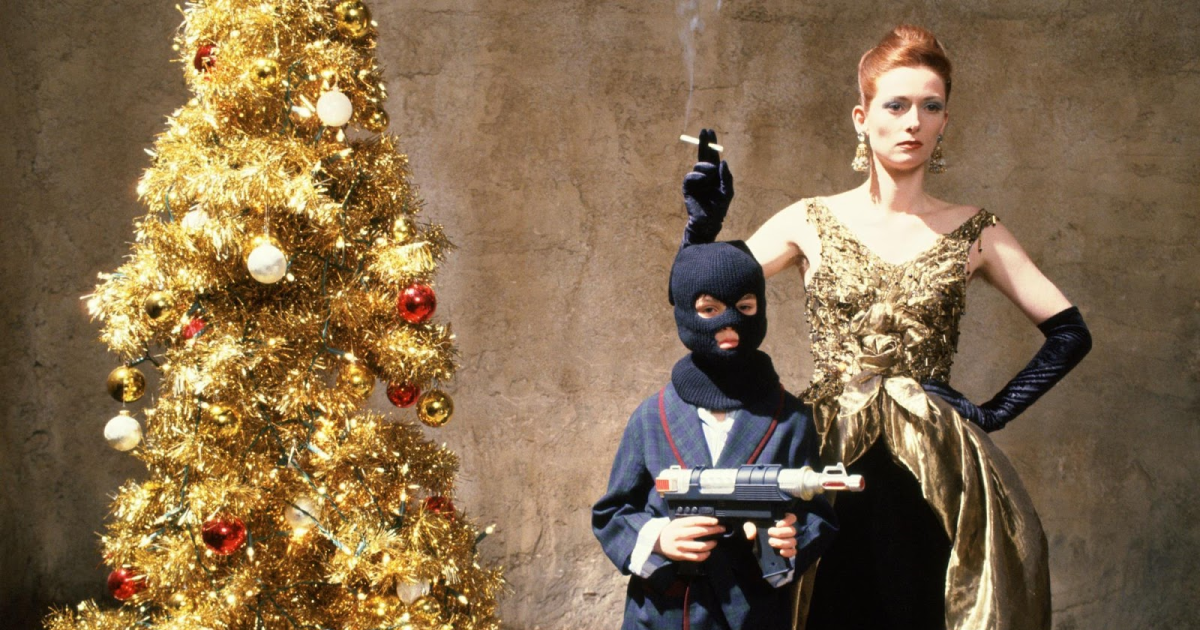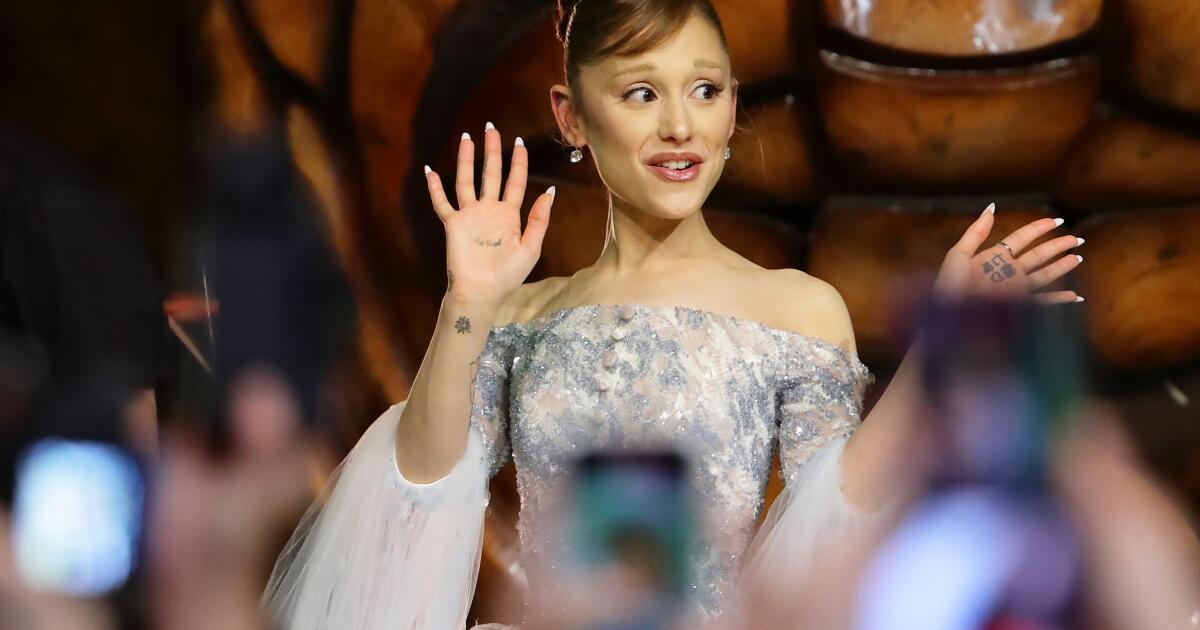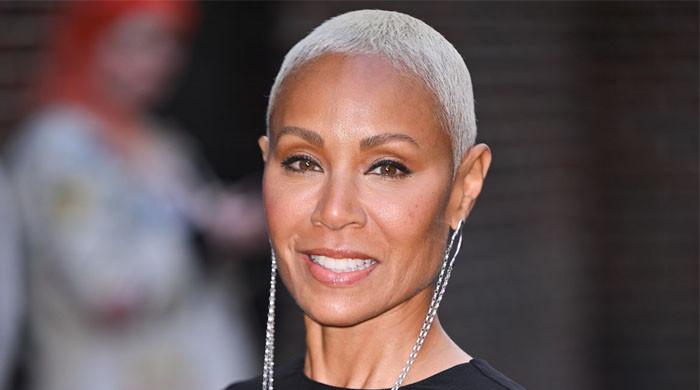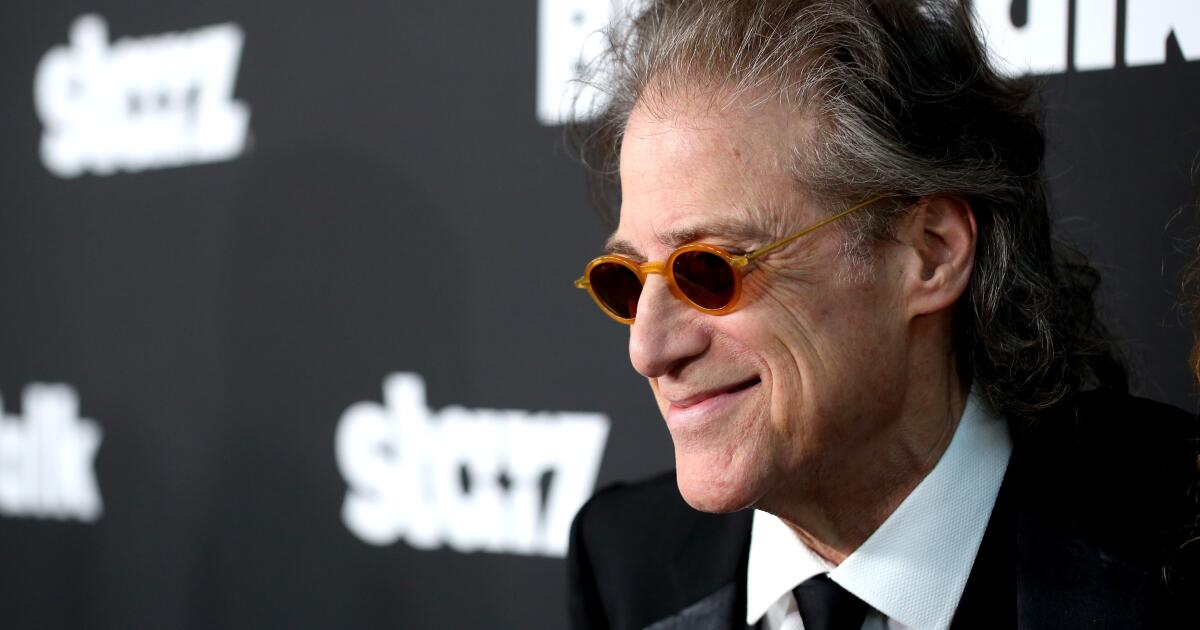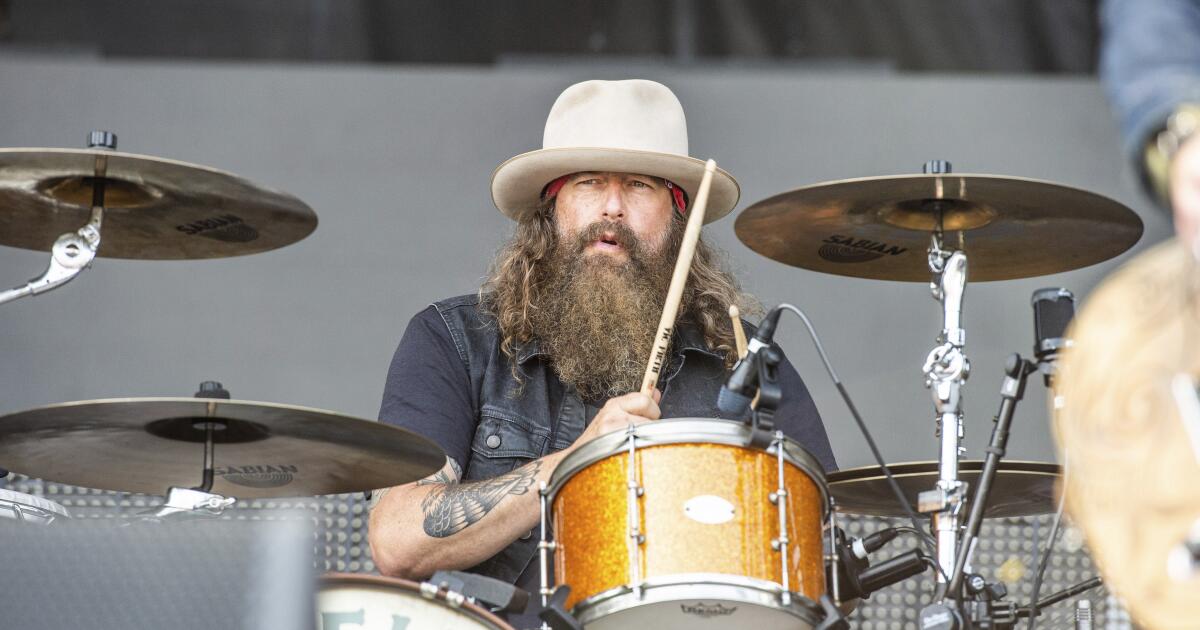Costume designer Carlos Rosario helped distinguish different armies through color. Lord Toranaga leads the brown army, but to add some luxury to the wealthy warlord, he added shades of shiny copper, gold, chocolate and burgundy… and an imposing helmet.
(currency exchanges)
“Shōgun” was first a novel and then a hit 1980 miniseries, but the new FX Networks series is amped-up historical fiction that offers viewers an entertaining education about medieval Japanese society and its elaborate costumes.
The production also became a cultural exchange of sorts for the crew, including costume designer Carlos Rosario.
“I had never done anything that required designing Japanese clothing from any era,” Rosario said in a video conference from France.
The show spans 10 episodes, each an hour long, which gave Rosario plenty of opportunities to portray characters in the right environment by matching their clothing to their rank, geography, clan loyalty, and even their changing psychological state.
Unlike James Clavell's 1975 novel or miniseries, this “Shōgun” relies less on the point of view of John Blackthorne (Cosmo Jarvis), the English navigator who is washed ashore in the foreign world of Japan. Instead, he vividly brings 17th-century society to life through historically accurate spoken and visual language, including thousands of costumes for warlords, armies, peasants, courtesans, and a group of shipwrecked European sailors.
The series and the era are so full of history that the FX network created a online viewer guide and, for the first time in any FX series, a podcast. Together they describe history, chart geography, and describe and illustrate costume, including how armor was made and changed along with styles of warfare. A treat for costume fans, the guide also includes a augmented reality “spatial experience” feature for Apple Vision Pro and mobile phones that can zoom in and rotate the exceptionally detailed armor of two warlords.
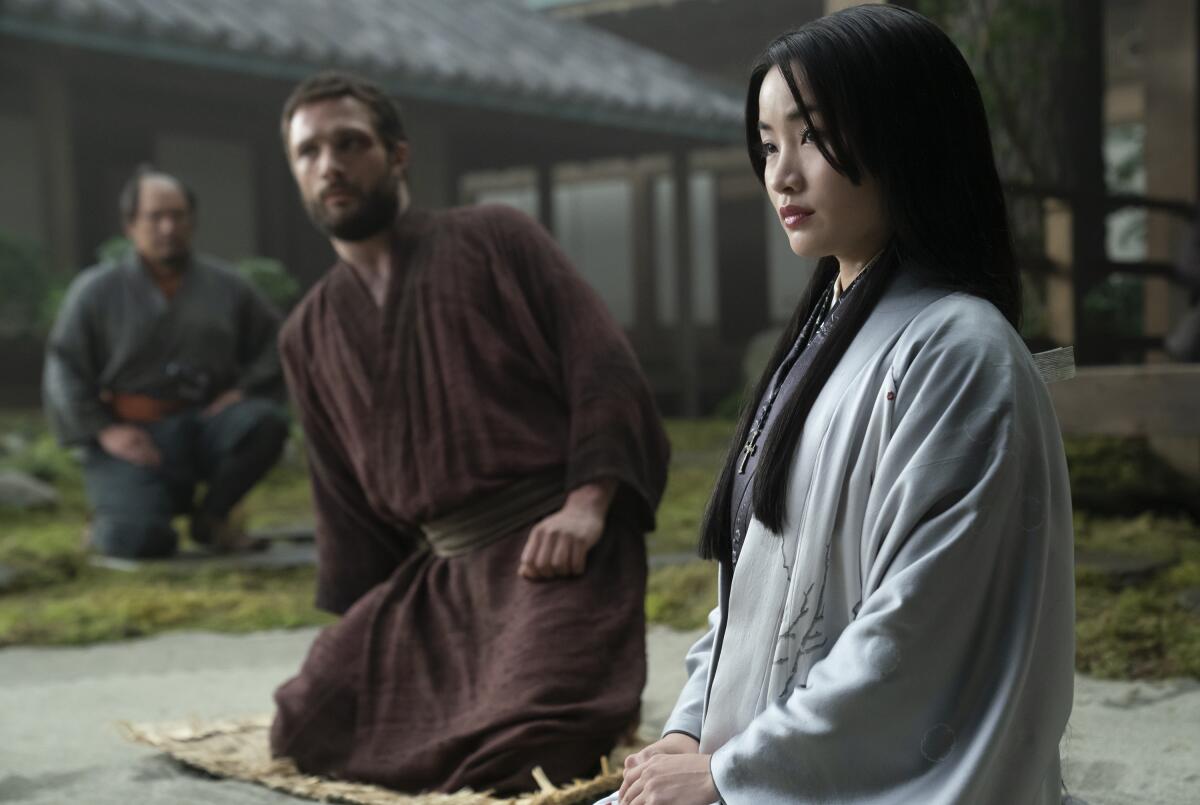
Like John Blackthorne, Cosmo Jarvis wore simple peasant-style tunics made of raw silk and linen. Anna Sawai, as the distinguished Lady Mariko, was dressed in a monochromatic, wintry palette. Its patterns evolve to show leafless branches.
(Katie Yu/FX)
The nine-month shoot in Vancouver through 2022 required a costume department of 85 to 125 people who made around 2,300 costumes, rented 1,300 pieces and bought many modern kimonos that could be altered.
Set in the year 1600, the story documents the end of the Sengoku period, a century of endless civil war before the prosperous Edo period, which has been more commonly depicted in popular culture.
The production was an opportunity to present and sometimes correct depictions of Sengoku-era costumes, especially for a Western audience. For example, many of the characters wear the predecessor of the kimono, a kosode. Over the centuries, the unisex garment evolved from a lower layer for the upper class to outerwear, fitted with an obi but with smaller sleeves that aided physical activity, useful for samurai warriors.
Rosario also learned that a woman's status is reflected in the number of layers she wears; Similarly, loose-fitting pants for men, called hakamaIt can have different proportions depending on the purpose or occasion.
“This work was particularly complicated in terms of research. It was always different places, different characters in different ranks,” Rosario said. “We had funerals. We had weddings. And we had so many characters of different social statuses.”
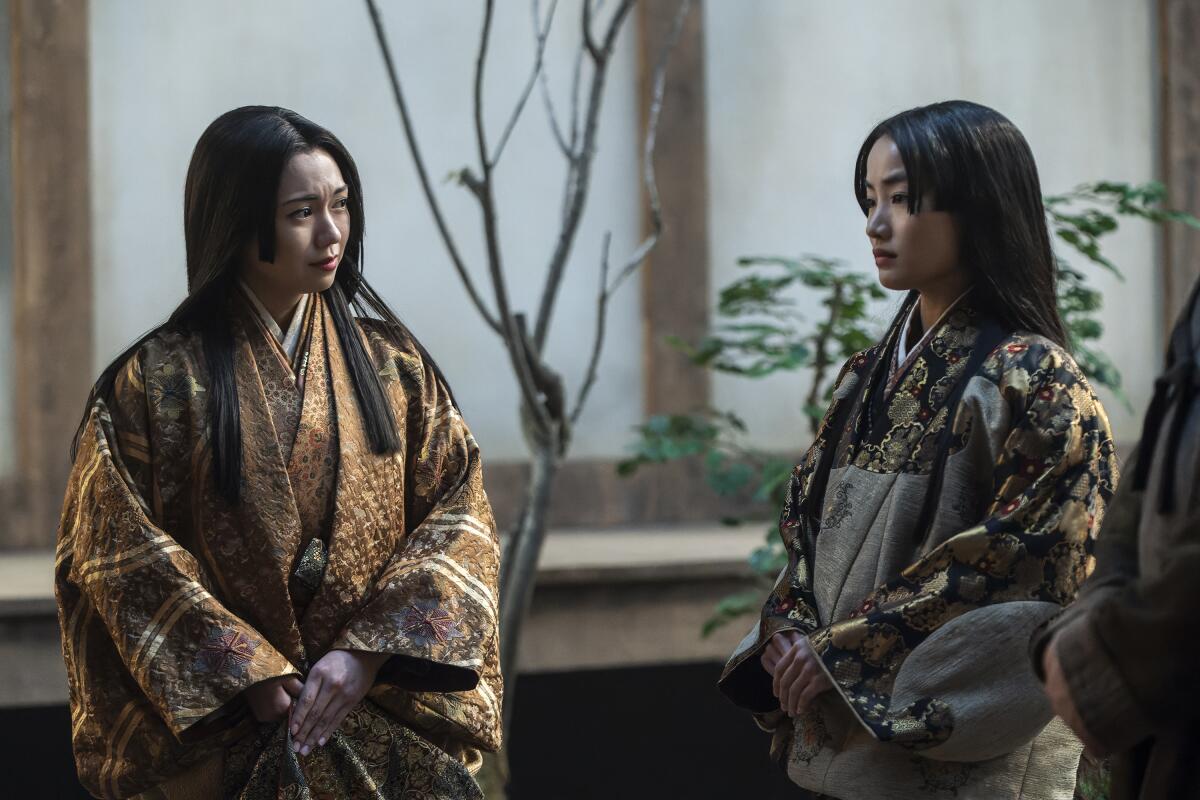
Costume designer Carlos Rosario learned that a woman's status is reflected in the number of layers she wears, such as Fumi Mikado as Ochiba no Kata, left, and Anna Sawai as Toda Mariko.
(Katie Yu/FX)
For three years, the production consulted with Frederik Cryns, a Belgian professor at the National Research Center for Japanese Studies in Kyoto. Cryns specializes in the Sengoku period and helped with language, customs and costumes.
“He was my go-to person from the beginning to the end,” Rosario said. “We studied the paintings of that time, the colors and the patterns. We needed his help to understand the language of clothing of that time,” Rosario said.
Rosario also provided his department with experts in Japanese textiles and kimono making. Multi-layered costumes could take more than an hour to assemble and place on a body. Rosario had to learn new efficiencies to tell the story and at the same time adapt to filming.
“In James Clavell's novel, he took the liberty of describing the characters as he imagined them,” he said. “One of the things that wasn't period accurate is that the samurai would never have been color coded. They wore their own armor and their own clothing. In the novel, he created clans and armies, which helps the audience know who is part of which army.” Rosario did the same and used color to identify groups.
Lord Toranaga (Hiroyuki Sanada) leads the brown army, “so I thought about what colors would be the next step, the ones more luxurious than brown,” Rosario said. Toranaga is wrapped in brilliant copper, gold, chocolate and burgundy.
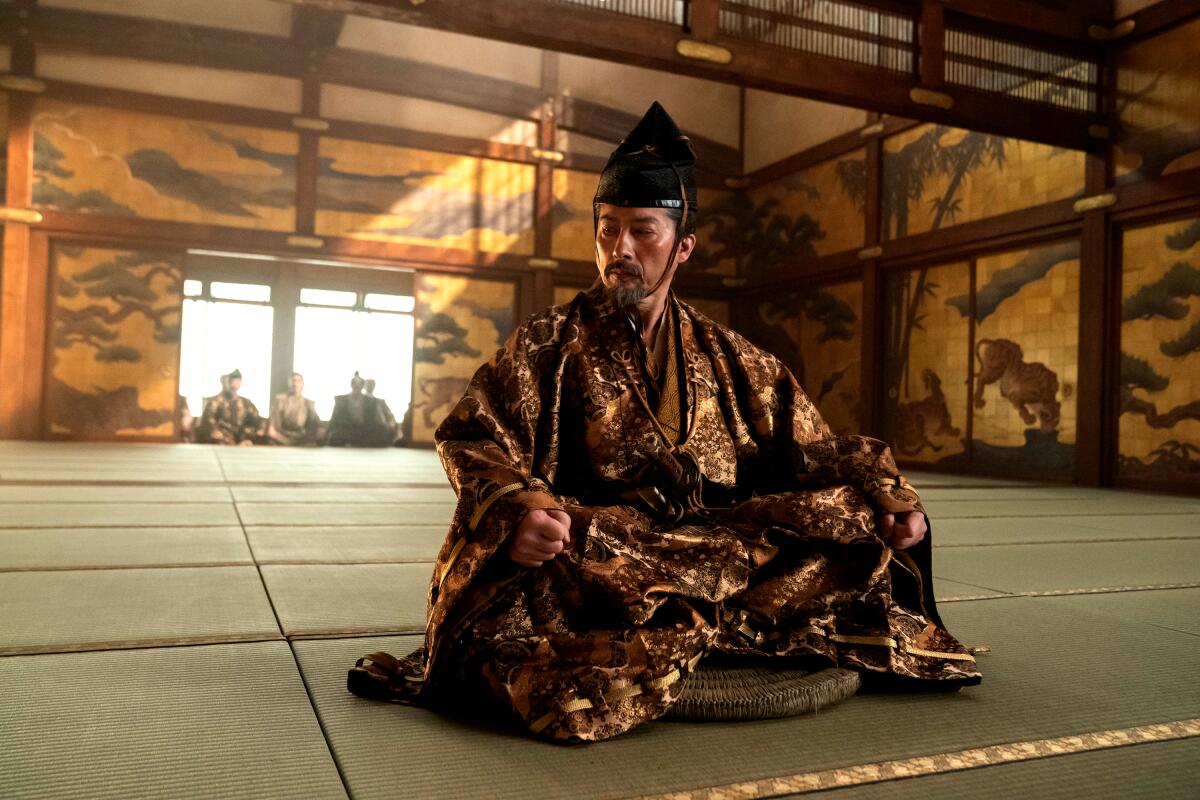
Highly detailed silks were used for courtesans, high-ranking women, and in men's ceremonial clothing, many with metallic threads reflecting candlelit interiors, as in the case of Hiroyuki Sanada as Lord Toranaga.
(Katie Yu/FX)
“I also knew that Lord Toronaga was a very powerful and rich lord. Then I found the most beautiful fabrics. I couldn't find them in America or Europe. I hired a team in Japan to look for Japanese fabric,” Rosario said.
Highly detailed silks were also used for courtesans, high-ranking women, and in men's ceremonial dresses, many with metallic threads that reflect the candlelit interiors. However, for Blackthorne's peasant-style robes, Rosario used humble raw silk and linen handwoven in Vancouver.
For noblewoman Mariko (Anna Sawai), a translator in an unhappy marriage, the lack of color reflects her state of mind.
“She's more psychological than everyone else I designed for the show,” Rosario said. “She walked through life lifeless.” She presents it in a monochrome, wintery palette. Her patterns evolve to show leafless branches “to represent that she has no purpose.” As she grows emotionally, “I started introducing camellias, which bloom in winter,” Rosario said.
Rich warlords and samurai show their status with intricate feathered robes, ornate fabrics or imposing helmets. Their complex armor is loaded with fur, horsehair, or leather, which was hand-painted to look like worn metal, but weighs much less.
Adapting 400-year-old costumes for modern cinema was full of technical challenges, but Rosario said the task “was much more than just a job.
“It was very clear to me that the journey Blackthorne was going through in 'Shōgun' was the one that my entire team and I were facing. We began the project as foreigners in a culture that we did not know much about but little by little we absorbed its richness and complexity, which allowed us to create bridges with a Japanese team that was very different from us.
“From an emotional point of view, I put everything I am and everything I have learned in the last 30 years into this project. And I left it with a great sense of satisfaction that I had accomplished something incredibly challenging, but also with gratitude to our showrunners for giving me the opportunity of a lifetime.”

